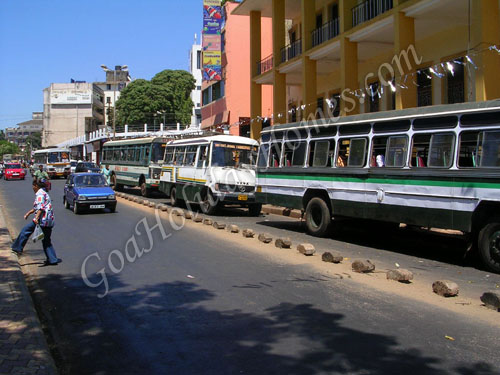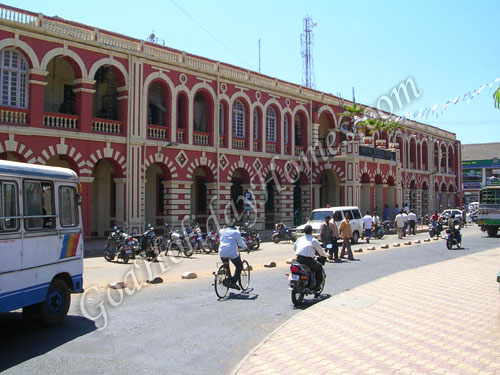Margao
Margao, which was once considered the Capital of Goa during its early centuries, left the job of capital to the river port of Chandrapur or now presently called as Chandor.
In early centuries it was termed as Goa�s second best city after the Capital Panjim city, but today Margao is the biggest city of Goa. It is the busiest city, lively and full of crowds, having one of the largest markets with huge variety in Goa. Even in the early days of it�s this place was famous for beautiful site scenes, exotic locations, lovely built temples and for many more wonderful things. Even long before Portuguese entered Goa, Margao city was known for its University having library with books over 10,000 which in those periods was not only something wonderful thing but surprising too.
This city�s first importance was notice by the Portuguese when the Jesuits chose it as the site for the establishment of their college for the south. Due to Muslim�s protest, they had to shift their college to Rachol as there was fort�s protection from Muslim raiders.
It was in the year 1881 that Margao town was beginning to grow as a commercial center, it was in this particular year that first step was taken to setup the Centenary of the railway era in Goa, and first single line track was opened running the railway from Mormugao Harbour through Margao to outside the state border in east and joining to Indian Railway�s network in Karnataka.
This not only made Margao attractive to visitors but strengthen in economic growth too. The town has a Jorge Barreto Park as its center of attraction, surviving some old century�s buildings, the Municipal building along with library, which was built in the year 1905, still inspires the touch of colonial formality to the atmosphere. Arcades and verandahs which are colour drained standing to the southern part, peeping outside from the there gets the view of constant moving traffic and a colourful garden giving peace of mind.
Next to this building is Bazaar, setup of stall with large variety of items such as dry fruits, masalas, vegetables, fresh spices, sweet jaggery, baked Goan breads, terracotta pots etc.
To the north side of this building is the statue of Rua Abade Faria, Margao�s tribute to the famous Goan personality. Just moving is the view of traditional houses giving the presence of 18th and 19th century�s architecture works and in the same lane among the house of wooden decorative called �Vista da Avendia� which is now converted into Convent. A building built in is a �Temple of Damodar�, worshipped in a small room, the replacement to the �Great Pagoda� of Damodar after the arrival of Portuguese.
The First church here was built in the year 1565, on the site of Hindu temples; in fact it was the first Goan Archbishop Dom Caspar Leao Pereira, who personally visited to Margao to choose the place. After seeing all other places, he guard arrow into this ground and ordered to build the church here, a Captain of Rachol Diogo Rodrigues was appointed to the needful. In this particular year i.e. 1565 this church was burned down by the Muslim raiders. Though the church was soon rebuilt, the same incident occurred in the year 1579 and due to this the Seminary was shifted to Rachol under the protection of fort's walls.
Espirito Santo, the Holy Spirit Church was built in the year 1675 and is the classic example of Genuine Indian Baroque Architecture. Further to this church square is Silva Family�s house house called as the �Sat Burnzam Gor� meaning the �Seven �Towered House� also addressed as the Casa Grande. Today only three of the seven high-pitched roofs survived, but this house is still big and elegant. Inacio Silva, who was Secretary to the Viceroy in the year 1790s, built this house during 18th century.
The two small chapels in Margao are the part of 18th century�s; both are well designed by Rococo architects, one San Joaquim Chapel, built in 1789 and second The Chapel of Our Lady of the Rosary in the year 1767, on the outskirts of the town in Fatorda is a fantastic example of the period. One more church worth to note is Mount Church � Nossa Senhora da Piedade, which was built here in the year 1820.
Contact Details
Get Directions:



